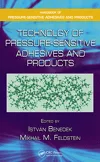Solventless Silicone Pressure-Sensitive Adhesives Are Paving the Way for More Sustainable Electronics
From smartphones and automotive displays to wearable devices and medical equipment, businesses and consumers alike are continuing to lean into complex electronics.

Andrey Suslov / iStock / Getty Images Plus
In today’s technology-driven world, the need for high-performing electronics is unparalleled. From smartphones and automotive displays to wearable devices and medical equipment, businesses and consumers alike are continuing to lean into complex electronics. Because of that, there is a growing need for materials that can effectively support the current iterations of these applications, as well as future ones.
Silicone pressure-sensitive adhesives (PSAs) often play varied roles of vital importance for fast-growing applications in the electronics sector. For example, protective films with ultra-stable peel adhesion and masking tape products with excellent performance in high temperatures and chemicals resistance, are necessary in applications like electronic circuit board masking. There are different types of PSAs, with the most common form being those that have a solvent base. Compared to typical organic-based PSAs, solvent-based silicone PSAs have historically been effective in handling extreme temperatures in high-performance applications like electronics manufacturing.
However, as consumers grow increasingly environmentally conscious and regulatory requirements become more stringent, major organizations are beginning to carefully consider the materials that go into their products to offset their impact on the environment and the health of end-users. These materials of concern often include solvents, especially benzene, toluene, ethylbenzene, xylene (BTEX). To tackle the growing urgency of more sustainable materials and the rapidly changing electronics industry, solventless silicone PSAs have emerged as a promising alternative to traditional solvent-based silicone PSAs.
The Challenges of Solvents
While solvent-based PSAs have been effective in providing high bond strength in demanding electronics applications such as sensitive electronic circuitry protection, they also require bigger equipment and more of it, including a dilution tank or mixer, evaporation heater, and a solvent recovery system to minimize worker exposure and environmental impact. Solvents also have a complex supply chain with many elements to consider such as their storage method, time for processing, as well as amount of energy to evaporate, condense, and transport them. With this many elements at play, solvent-based PSAs can leave room for error in the development process.
As previously noted, environmental concerns are one of the largest pain points associated with solvents. When pressure-sensitive tape manufacturers work with solvent-based formulations, volatile organic compounds (VOCs) and hazardous air pollutants (HAPs) are contributed to the environment, requiring their emissions to be highly regulated1.
While the PSA category is still growing, efforts have been made to incorporate solvents with less harmful materials like BTEX. For example, benzoyl peroxide (BPO) cure heptane-based silicone PSAs have well-balanced adhesion, tackiness, and outstanding heat-resistance performance (>260°C) for high-temperature masking tape and hot-seal tape application during semiconductor processing. Due to a special technical route to produce heptane-based silicone PSAs, the cyclic content in heptane-based silicone PSAs is extremely low, which offers many benefits during downstream application, especially since the VOC no longer contains BTEX. Aromatic solvents are typically vaporized during the downstream BPO cure process for silicone PSAs where the insufficient solvent recovery system may cause BTEX solvents to be released into the atmosphere. Heptane-based silicone PSAs are formulated from raw materials without BTEX, which solves this issue from the source. Final products are also less likely to retain residual VOC and reduce the generation of dust in the curing oven, as it is easier to control the VOC boil-off. The result is higher production efficiencies, reduced equipment cleaning costs, and less maintenance.
Though heptane-based silicone PSAs are a less harmful solvent-based PSA option, removing solvents entirely from the equation is top-of-mind for formulators who are looking at even more sustainable alternatives. Prior attempts to create a solventless silicone PSA resulted in materials that delivered the tack and adhesion of solvent-based PSAs but struggled to maintain the high-temperature shear performance that many industrial applications demand. A long-standing challenge to solventless silicone PSAs has also been the ultra-high viscosity of the silicone ingredients, which makes them challenging to mix, process, or coat without diluting in a solvent. In the last couple of decades, silicone raw materials and technologies have evolved significantly. This has allowed developmental chemists to expand the possibilities in this space, leading to the creation of effective solventless silicone PSAs.
Benefits of Solventless Silicone PSAs
In recent years, the range of solventless silicone PSAs has expanded with a better-balanced performance that addresses the requirements of protective films, specialty tapes, and electronic assembly. There are two main categories solventless silicone PSAs fall within: high adhesion and low adhesion. Through in situ reactions of chain extension and crosslinking, high adhesion solventless PSAs can meet general coaters’ needs for a solvent-free PSA offering that provides comparable performance to solvent-based silicone PSAs. Low-adhesion solventless PSAs are designed for protective film applications in electronics, particularly for displays and screens that can be directly coated onto substrates with a more stable performance in peel adhesion.
Solventless silicone PSAs2 offer the ability to prepare pressure-sensitive constructions at low curing temperatures. This allows for several benefits including:
- Electrical insulation properties
- 100% actives
- Clean removability
- Moisture/UV resistance
- Reduced emissions across the value chain
Not only do high-adhesion solventless silicone PSAs have close-to-zero VOC emissions, but they also minimize the presence of BTEX. While BTEX have long been solvents of choice due to upstream manufacturing of silicone MQ resins, they are highly regulated in most countries as they present risks to individual health and the environment at very low exposure or emission levels. Working with low-VOC materials is not only safer for the environment, but also lessens the risk of potential exposure to employees, prioritizing safety and sustainability across all stages of the manufacturing process.
The Future of PSAs
Several new developments are on the horizon for the electronics industry that will likely impact silicone PSA applications broadly. The continuing trend away from incorporating aromatic solvents like toluene and xylene and the increasing demand for high-performance assembly tapes are shaping the industry towards more efficient and sustainable supply chains.
Widely used in protective film and masking tape applications, requirements of various substrates such as polyethylene terephthalate (PET), polyimide (PI), polypropylene (PP), and paper are also likely to impact the use of solvent-based silicone PSAs. Additionally, the wetting of solvent-based silicone PSAs on substrates is still preferred compared to that of solventless silicone PSAs. To improve the performance of solventless silicone PSAs in this regard, it’s critical that optimizations in process and coating equipment are made to encourage increased adoption of these technologies.
As an industry rooted in innovation, electronics manufacturers are looking for innovative materials to solve their performance and sustainability challenges. While there are several options to choose from, solventless silicone PSAs can be the material of choice that helps the electronics industry move into the future — a safer, more sustainable future.
Learn more about Dow at www.dow.com.
References:
- Pressure Sensitive Adhesives - Additives, Polymer and Application Trends (SpecialChem)
- DOWSIL™ 2014 Adhesive (Dow.com)
Looking for a reprint of this article?
From high-res PDFs to custom plaques, order your copy today!







